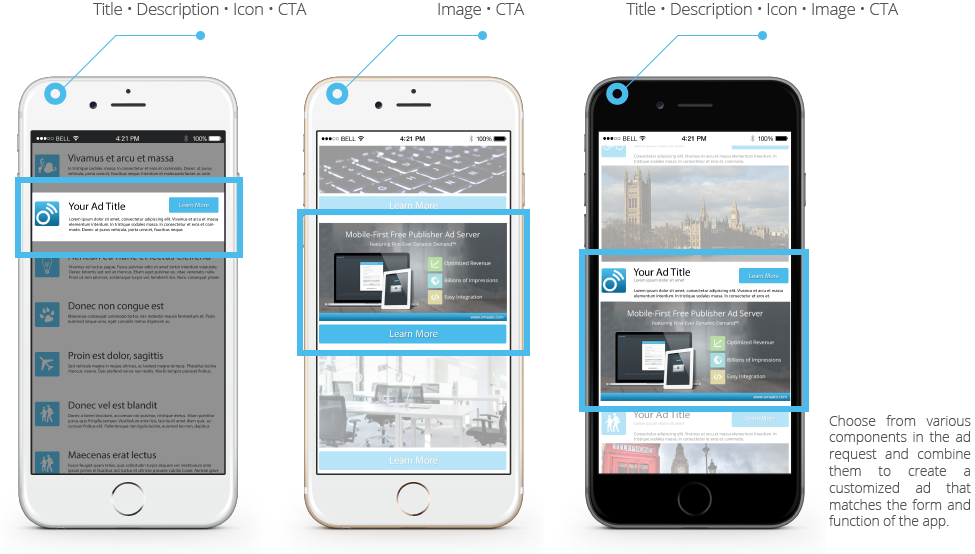
Sooner or later, most mobile site owners face the problem of monetizing their customers. There are numerous ways to earn money via mobile traffic, but right now we'll talk about publishers that prefer to make all the adjustments by themselves, using automation platforms.
Let's assume that our hypothetical site owner is past registration and integration, and has to decide what mobile ad format to choose. More often than not, publishers pick ad formats according to their personal preferences, plus a vague knowledge about the efficiency of those formats. BUT those personal preferences can be detached from the reality of mobile web advertising.
We've analyzed the data collected by Clickky's self-serve platform to see how the opinion of site owners concerning the best ad formats correlates to profitability.
Determining the efficiency of ad formats
"Which mobile ad format IS the most efficient?" is a tricky question. Any part of the question can be regarded as faulty, once you take a closer look.
- "Which mobile ad format ..." -- there are too many classifications, vague terminology, types and forms, not to mention "new" ad formats (basically old ones but with tricky new names).
- "... most efficient" -- by whom, according to what criteria? (Should we consider how long people observe the ad or how often do they click on it? Or maybe it's more important what they do afterward?)
Here's our reference data:
- We determine the efficiency of a given ad format according to the number of clicks. We don't count leads because, when dealing with CR from clicks to leads, factors like app ratings and reviews are more important.
- The efficiency of ad formats is viewed from the standpoint of a site owner who is using automation platforms in order to monetize the traffic
We selected 500 random sites to determine the popularity of different mobile ad formats among the users registered on our self-serve platform, and we studied the efficiency of ad formats displayed on those 500 sites.
Here's what we found:
The ad formats most commonly chosen by the owners of 500 mobile sites are catfish (31.1% of owners prefer this format), native (27.3%) and full screen (13.5%). The least popular ones are dialog ads (8.1% of site owners use such ads), recommended apps (6.7%), rich media (5.2%), expandable (4.6%) and interstitial ads (3.5%).
The click-through rate for each of the formats sometimes does not correlate with the level of popularity it has among the site owners. The catfish ads have CTR rate of 2.33%, dialog ads -- 8.66%, recommended apps -- 0.22%, fullscreen -- 2.55%, rich media -- 3.63%, expandable -- 3.78%, interstitial -- 1.96%, and native -- 1.22%.
Dialog ads, expandable and rich media ad formats have had the highest CTR, while the more popular native and catfish received below-average CTR.
The amount of clickability for every ad format may be represented in the following figures: 35.6% for dialog ads, 15.5% for expandable, 14.9% for rich media, 10.5% for fullscreen, 9.6% for catfish, 9% for recommended apps, 8% for interstitials and 5% for native ads.
Therefore, from the publisher's point of view, the most profitable ad formats are (in descending order of popularity):
- Catfish
- Native
- Fullscreen
- Dialog ads
- Recommended apps
- Rich media
- Expandable
- Interstitial
Nevertheless, mobile site users "voted" for entirely different ad formats with their clicks (in descending order of clickability):
- Dialog ads
- Expandable
- Rich media
- Fullscreen
- Catfish
- Interstitial
- Native
- Recommended apps
Of course, this research is not the ultimate cure, but it provides some valuable information for your consideration. The experience shows that site owners often make mistakes when choosing the most efficient ad formats. Always take into account the characteristics of the site and the mobile app categories. Don't be afraid to experiment -- try working with different partners and new formats. Focus on the solutions that have the widest pick of mobile ad formats. You should also incorporate an additional platform if the one you are currently using doesn't provide 100% of all existing mobile ad formats.
And don't forget about constantly optimizing the monetization process.
No comments:
Post a Comment